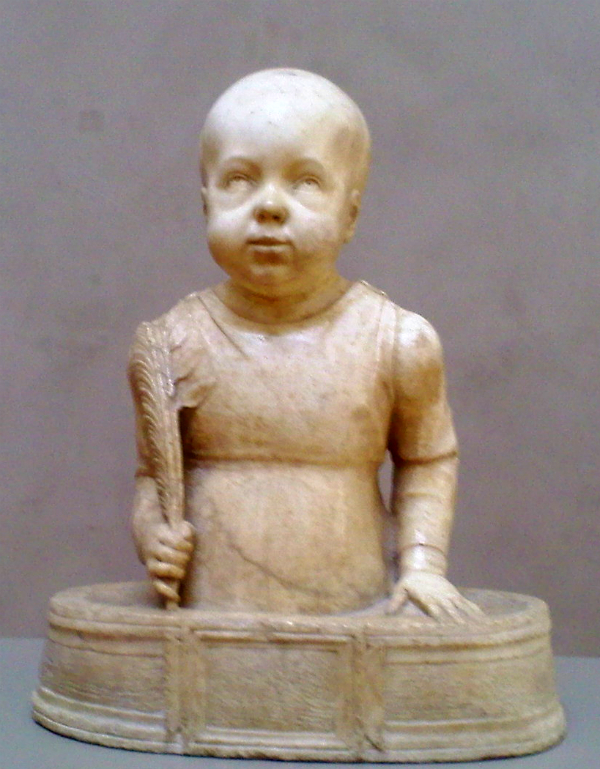
Francesco Laurana (attrib.)
Simon of Trent
1470-1480
Marble
The Getty Center, Los Angeles, California
This bust was long thought to represent St. Cyricus the boy martyr, but in 2018 Jeanette Kohl published an article demonstrating that the subject was Simon of Trent, a small boy who disappeared in March of 1475 in Trent. On Easter Sunday of that year his body was discovered with unquestionable signs of hideous torture followed by strangulation. A rumor followed that the body had been found in the cellar of a local Jew, and a terrible pogrom ensued. After that, the bishop of Trent promoted a cult of the boy "martyr" that flourished in the ensuing century and continued in Trent until 1965, when it was suppressed by Paul VI.
Kohl says that marks on the bust are consistent with those found on the boy's body and resemble the marks seen in other portraits of the child. The bust has a multitude of little pits that may have been colored red to mimic the nail marks on the boy's body. Together with the plinth below, they suggest an intention to relate the boy's death to Christ's through
Man of Sorrows iconography.
The actual marks on Simon's body were apparently made with pliers and a knife, and he had been strangled with a scarf. These items became attributes in portraits of the boy martyr, along with a bowl allegedly used to collect his blood. The attributes in the Getty sculpture are a palm branch, the usual attribute of a martyr, and a branch of laurel. The laurel is also seen in a number of Simon's portraits.
Kohl makes a strong argument and it persuaded the Getty to change the label posted beside the sculpture, but a few weak spots are worth mentioning. Kohl dismisses St. Cyricus as a possible subject of the sculpture because it was created more than a thousand years after that saint's death and because Cyricus was not the subject of any cult in the region around Trent in the 15th century. As for the first argument, of course a great many saints of the 4th century were the subject of 15th-century images. As for the second, quite a few medieval churches are named for Cyricus in Italy and France, the countries where Laurana worked. The sculpture could well have been created for one of them, not for Trent.
Then there is the matter of the pits in the marble. Kohl's examination of the sculpture concludes that the pits anchored spots of red wax intended to represent the wounds that Simon suffered from nails driven into his body. This would not exclude a hypothesis that Cyricus is the subject, because he also was tortured with nails in the same way.1
Photographed at the Getty Center by Richard Stracke, shared under Attribution-NonCommercial-ShareAlike license.